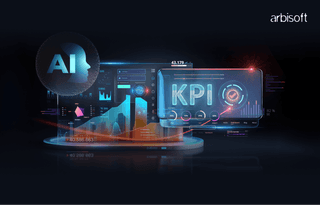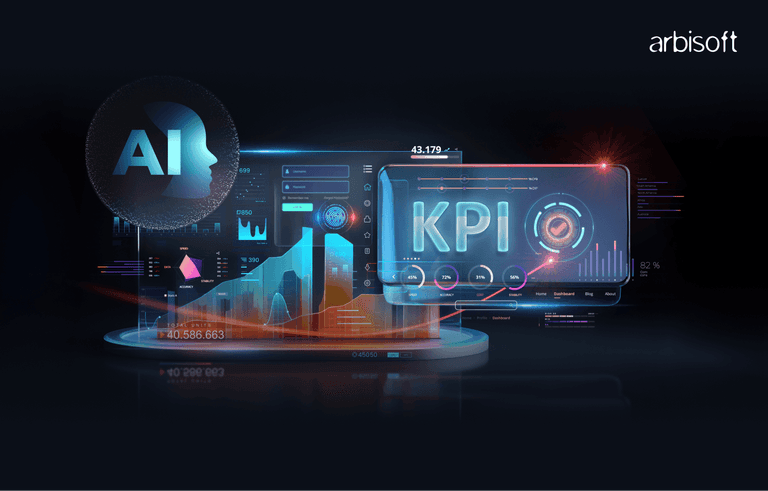We put excellence, value and quality above all - and it shows




A Technology Partnership That Goes Beyond Code

“Arbisoft has been my most trusted technology partner for now over 15 years. Arbisoft has very unique methods of recruiting and training, and the results demonstrate that. They have great teams, great positive attitudes and great communication.”
What Are the First Steps to Integrating Predictive Data Analytics Solutions into Your Existing Infrastructure?

I'm no fortune-teller, but I’ll tell you straight: if you’re still treating predictive analytics like something for “future you,” you’re already behind. Let’s roll up our sleeves and get to the point.
The Urgency: Why Predictive Analytics Integration Can’t Wait
We’ve all heard the pitch before: “Data is the new oil.” But here’s the thing—nobody’s waiting around to build the rig.
In 2025, boardrooms don’t just ask for insights—they expect answers before the coffee gets cold. Predictive analytics in business isn’t a luxury anymore. It’s a baseline. The pressure’s real. The stakes are high.
According to fresh industry data, 77% of organizations now consider predictive analytics essential. That’s not a trend. That’s a shift. If you’re sitting on the sidelines waiting for the right moment, your competitors aren’t.
Every month you wait, someone else is figuring out how to trim downtime, anticipate market changes, or target the right customers at the right time. Your quarterly numbers? They’ll start feeling the heat. Fast.
So if you’re wondering when to begin, the answer is yesterday.
Recognizing the Pain Points of Legacy System Integration
We’ve covered the why. Let’s talk about what gets in the way.
The biggest roadblock? Legacy systems that act more like digital antiques than modern platforms. I’ve seen companies where nobody really knows how the data architecture works anymore. There are connectors held together with duct tape, systems that haven’t seen an update since pre-pandemic, and data pipelines that crawl instead of run.
Your existing infrastructure might be solid for daily ops, but it wasn’t built for predictive analytics. You’re dealing with:
- Data silos that don’t talk to each other
- “Modern” tools that only look good on paper
- Security headaches every time you patch something
Trying to build predictive analytics on top of that? It's like trying to install a Tesla engine in a horse-drawn carriage.
This isn’t to knock your in-house team. They’re probably sharp. But if they’re used to batch reports and rigid workflows, diving into real-time analytics is a whole new game. It’s fast-paced. It’s messy. And it demands flexibility your current stack may not offer.
Planning for Seamless Predictive Analytics Integration
Now that we’ve acknowledged the mess, here’s how you start cleaning it up.
First step? Brutal honesty. You need to understand your current data landscape before you can transform it. I’m talking about a full audit. What lives where? What moves how? Who owns what?
Maybe you’ve got a data lake. Maybe you’ve got a bunch of disorganized Excel sheets named “final_v7_UPDATED.” Either way, take stock. Are you running on data analytics solutions that were duct-taped together? You need clarity before you need scale.
This is where cross-functional input matters. Get sales, ops, finance, even customer support in the same room. They all touch the data. They all suffer when it’s bad. Ask them what “better” would look like.
Is the goal faster decisions? Fewer outages? More upsells?
Define it. Align on it. Because without shared expectations, even the best predictive analytics solutions won’t move the needle.
Partnering for Success: Engaging with a Data Analytics Firm
Once you’ve mapped your current state, you’ll probably realize this isn’t a solo hike.
Yes, your team is talented. But predictive analytics implementation requires more than talent—it requires time, specialization, and experience. That’s where partnering with a strong data analytics firm pays off.
You’re not just hiring for dashboards. You’re hiring for direction.
The right partner can help:
- Align data sources across your messy systems
- Implement predictive models that make sense for your use case
- Guide your team through tough trade-offs
I’ve seen it firsthand. A telecom company I worked with had lost faith in analytics. Until a pilot project showed how churn modeling could prevent $3M in annual losses. That one success? It unlocked executive buy-in, budget, and confidence.
If you’re skeptical, start small. Pick a use case with clear ROI potential. Let the results speak for themselves.
Step-by-Step Predictive Analytics Implementation Roadmap
Alright, let’s break it down.
Here’s how to approach predictive data analytics solutions without face-planting:
1. Assemble the Right Team
You’ll need data engineers who know your pipelines, analysts who can explain data to non-technical folks, and a project lead who knows how to prioritize impact over perfection.
2. Map Data Sources and Flow
ERP, CRM, IoT, spreadsheets—you name it. Trace how data moves today. Don't sugarcoat it. Draw the real version, ugly as it may be.
3. Design Your Architecture Thoughtfully
Do you need real-time insights? Go for stream processing. Handling batch jobs? Look into hybrid setups. Tools like Apache Kafka and cloud-native platforms are your friends—but only if they fit your needs and scale affordably.
4. Balance Flexibility with Cost
In 2025, smart architecture isn’t the fanciest—it’s the one that scales without draining budgets. Build with cost in mind. Think vendor-agnostic. Avoid lock-in.
5. Define Metrics That Matter
Don’t launch into the void. Choose KPIs that reflect business value: reduced downtime, improved conversion, faster inventory turnover. Tie everything back to decision-making.
6. Test in Controlled Environments
Before anything goes live, run it in a sandbox. Catch issues early. Tune models. Prep for edge cases. Think of it as your rehearsal before the big stage.
Overcoming Common Challenges in Predictive Data Analytics Solutions
Even the best predictive data analytics solutions come with hurdles. Understanding the challenges in predictive analytics is key to avoiding costly missteps.
Let’s look at a few common hurdles and how to deal with them.
Downtime and System Failures
Predictive systems rely on constant data flow. A single hiccup can create downstream chaos. Stagger rollouts. Use backups. And always have a rollback plan.
Hidden Costs
Sure, the tools themselves might be affordable. But what about cleaning years of dirty data? Or building custom APIs because your vendor doesn’t play nice? Budget for the work, not just the software.
Stakeholder Resistance
This one’s big. People hate change. Especially if they think it threatens their job or adds complexity. Get ahead of that. Speak in outcomes, not algorithms. Show how predictive insights support, not replace, human judgment.
In my experience, once people see small wins—like faster reporting or one-click insights—they’re hooked. Celebrate those moments. They build trust.
Futureproofing Your Data Infrastructure for Sustained Business Impact
Now let’s zoom out.
You’ve started the journey. Great. But this isn’t a one-and-done initiative. Predictive analytics isn’t a project—it’s a muscle. You build it. Use it. Strengthen it over time.
That means creating a data infrastructure that doesn’t just handle today’s needs but flexes with tomorrow’s demands. Here’s what that looks like:
- Modular architecture that can scale or shift
- Self-service tools for non-technical users
- Feedback loops between business units and data teams
- Continuous model refinement
The goal? Make predictive analytics feel less like rocket science and more like part of your daily ops. Get to a point where marketing, sales, and operations can make data driven decisions without calling IT every five minutes.
Over time, this builds what I like to call “data fluency.” Not everyone’s a data scientist. But everyone understands how data helps them do better work.
Final Thoughts
So, what are the essential steps for predictive analytics?
Start by auditing your existing infrastructure. Get real about where your data lives and how it flows. Bring everyone to the table. Set clear business goals. And partner with folks who’ve done it before.
Then, implement with care. Go step by step. Avoid the temptation to do everything at once. And when the inevitable bumps happen, adjust without panicking.
Predictive analytics isn’t a miracle cure. But done right, it’s a force multiplier. It turns guesswork into strategy. Noise into insight. And complexity into clarity.
And the best time to start?
Right now. Before the next board meeting. Before your competition moves another step ahead.
























